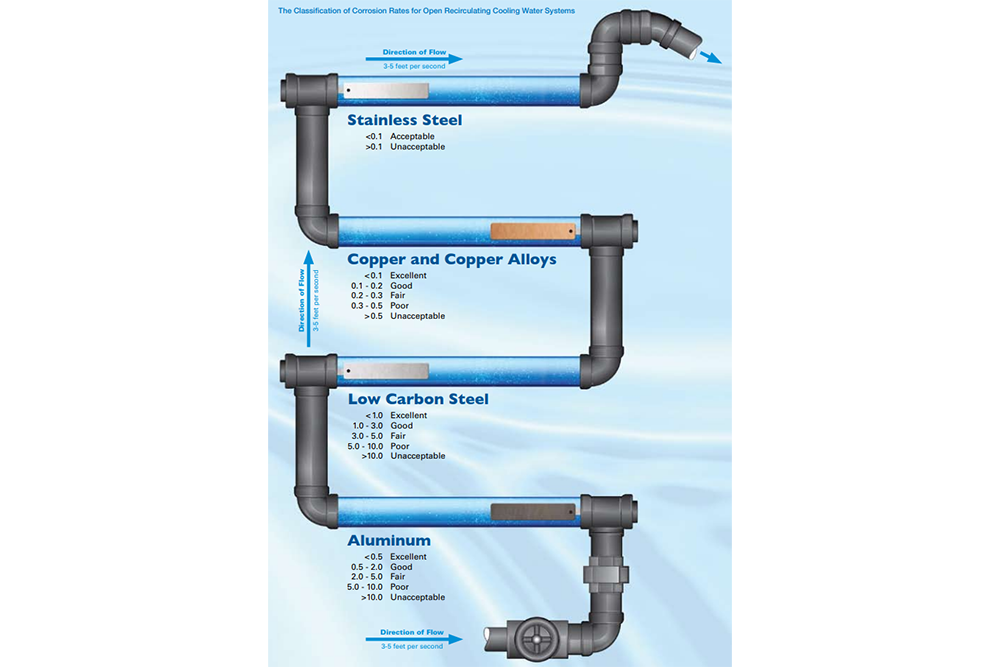Equipment
Measurement Equipment
Quantifying the corrosion rate of a system and reporting to the customer is an important part of water treatment service. Supplying accurate and cost effective corrosion measurement testing is one of the Four Pillars of cooling tower control. Here are some of the many different methods of quantifying corrosion in a system:
Coupon racks may look like just a few PVC elbows and pipe lengths with some metal pieces in it; however, the standards to get accurate corrosion rates are quite particular. A proper coupon rack must be built to the ASTM D2688-15E1 (the latest standard at the time of publication) to be able to accurately gauge corrosion rates. The specification outlines allowable flow rates, physical dimensions, material, and even coupon order. Fundamentally, water treaters put a representative piece of metal into the rack, keep it in the system for a defined amount of time, and weigh it before and after to judge the level of corrosion occurring in the system. The down side to coupons is that they take 30-90 days for an “in-service” coupon to yield results. Nonetheless, this is one of the most economical and powerful methods to illustrate potential corrosion concerns.

Courtesy of The Analyst- AWT's Quarterly Magazine
Illustration of correct coupon order and acceptable corrosion rates
- Boffardi, B. (2010) Corrosion and Foul Monitoring of Water Systems. The Analyst Technology Supplement [p9] by The Association of Water Technologies.
If you want an online corrosion measurement device, then there are two distinct industry accepted technologies capable of automatically digitizing corrosion rates. Resistance and polarization measurements are two completely different devices; both are capable of quantifying corrosion. Resistance measurement senses subtle changes in the conductivity of a representative piece of metal, and as metal corrodes and thins, the electrical resistance will increase. This method of sensing is not instantaneous, yet it is faster than standard coupons. Polarization is another electrical method of measuring corrosion. The electrodes in this method take on the role of the cathode and anode, just like the corrosion process. Polarization is a great method for “live” corrosion monitoring, but care needs to be taken to keep these electrodes clean. These methods are less common and involve a much higher upfront financial investment while providing faster response to system corrosion and often enabling online visibility to corrosion rates.
Other Considerations
There are many other useful data points. Water treatment professionals can track suspended metals in the process relative to make-up water, routinely test for sufficient Azole levels, and, often overlooked, perform a thorough visual inspection. Pictures can sometimes be your best “measurement tool” to express corrosivity. Know your system: certain factors, like oxygen and temperature that affect corrosion rates, are artifacts of the process itself. On the other hand, other parameters can be controlled by correct equipment implementation. For example, controllers have built-in features to stagger chemical feed, so you can feed your oxidizing biocide and your azole corrosion inhibitor separately, and a pH controller can keep your system within an ideal pH range, especially during a passivation process. Corrosion, from a practical standpoint, is irreversible. Downtime for system repair and costly tubing replacements are things which your customer will remember. The right level of equipment can provide your customers with sufficient protection and necessary data about their system health.